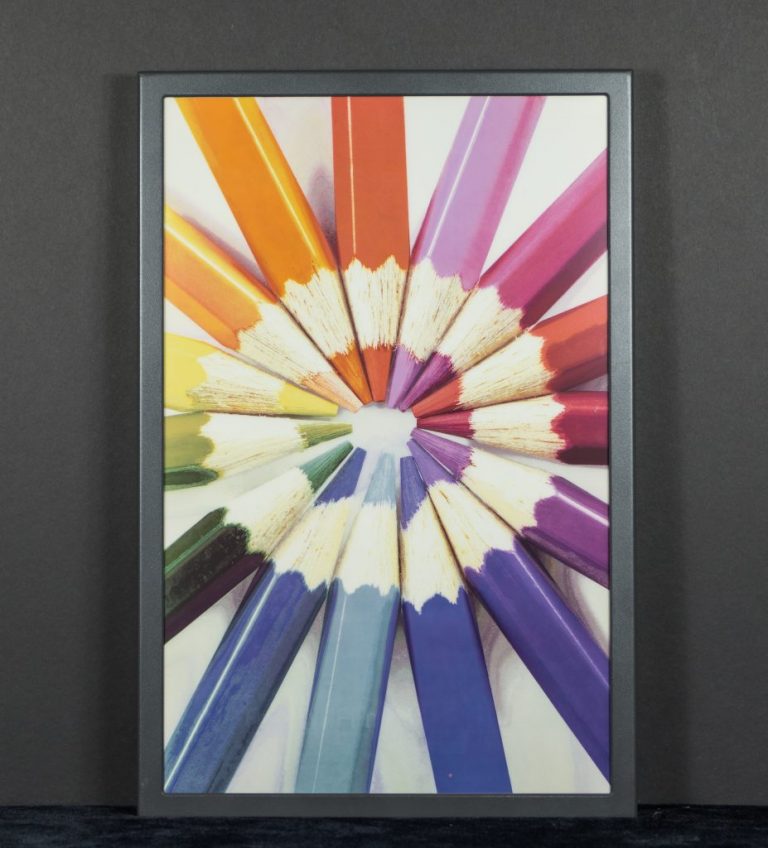E-Reader Companies Will Adopt Color E-paper in 2018
March 22, 2017 By Michael Kozlowski
There have been only a handful of e-readers that utilized color e-paper. Ectaco, Hanvon and Pocketbook all released products that utilized technology called Triton, but were commercial failures due to the immaturity of the market at the time. Why haven’t companies like Amazon, B&N or Kobo released a colored e-reader and what does the future hold for this technology?
One of the only companies that went beyond proof of concept and actually made it in a commercial product was E Ink Triton 1 and Triton 2. E-Ink Triton 2 came out in 2013 and the big selling point was the added layer of film that will give customers a higher degree of contrast and better color display from the previous generation, which came out in 2010. Triton 1 had a grid of 2×2 pixels, red, green, blue, and white and used a square color filter array. Meanwhile, Triton 2 has the same color display, but instead of using square pixels it is using rectangular. It should give you 4096 degrees of color with 16 levels of each.
Qualcomm spent a copious amount of money and four years developing Mirasol technology. It was billed as an alternative existing Color e-Paper solutions on the market. It was based on IMOD (Interferometric MODulation), with MEMS structures at its core. This MEMS-based innovation is bistable & highly reflective, meaning the display itself can be seen in direct sunlight. There were only a handful of devices ever made, most notably the Kyobo e-reader sold in Korea. Qualcomm abandoned this tech for the e-reader space and tried to get smartphone and smartwatch companies to embrace it, but failed to do so.
Many companies told me off the record that the reason why they did not embrace color e-paper was because the technology looked washed out and these days users have higher expectations. The iPad and other high resolution tablets have trained customers that a full color experience should have super high resolution and phenomenal PPI, full color e-paper is simply not up to par.
In 2018 we might see some bigger companies get into the color e-paper space with new E Ink technology called ACEP, which stands for Advanced Color ePaper. It was announced in early 2016 and features a high quality, full color reflective display. For the first time ever, an electrophoretic display (EPD) can produce full color at every pixel without the use of a color filter array. It can display over 32,000 different colors and has a resolution of 1600 x 2500 pixels and 150 PPI.
ACeP achieves a full color gamut, including all eight primary colors, using only colored pigments. The display utilizes a single layer of electrophoretic fluid, which is controlled using voltages compatible with commercial TFT backplanes. The fluid can be incorporated into either microcapsule or Microcup structures. The richness of the colors is achieved by having all the colored pigments in every picture element (pixel) rather than the side-by-side pixel colors achieved with a CFA. This eliminates the light attenuation, which can be quite significant. Like regular E Ink ePaper, ACeP maintains the ultra-low-power and paperlike readability under all lighting conditions.
In developing ACeP, E Ink researchers solved the very complex problem of how to get reflective color at every pixel in a commercially viable structure. Other approaches have utilized stacked backplane structures that are complex, difficult to manufacture and costly. The E Ink approach utilizes only a single backplane. Many materials and waveform inventions were required to independently control the position of the multiple color pigments.
So far the ACEP technology was relegated for digital signage, but E Ink told me on the record that it will be available for mass production in the e-reader space sometime in 2018. One of the challenges was to get the screen working with E Ink Regal Waveform technology and Freescale processors. This is critically important because page turns have to be quick and to solve any ghosting problems.
Many of the old brands that utilized colored e-paper are no longer making e-readers anymore or have scaled back. The industry has consolidated and there are only a few major brands that sell hardware as a gateway for their e-book ecosystems. They have the strongest likelihood of releasing a color reader using ACEP technology and would appeal towards a huge demographic of existing users.
E-Reader owners tend not to upgrade their device every year or two. This is primarily due to the underlying technology not growing like it has for smartphones and tablets. A color e-reader might prompt hundreds of thousands of users to spend a few hundred dollars to upgrade.
